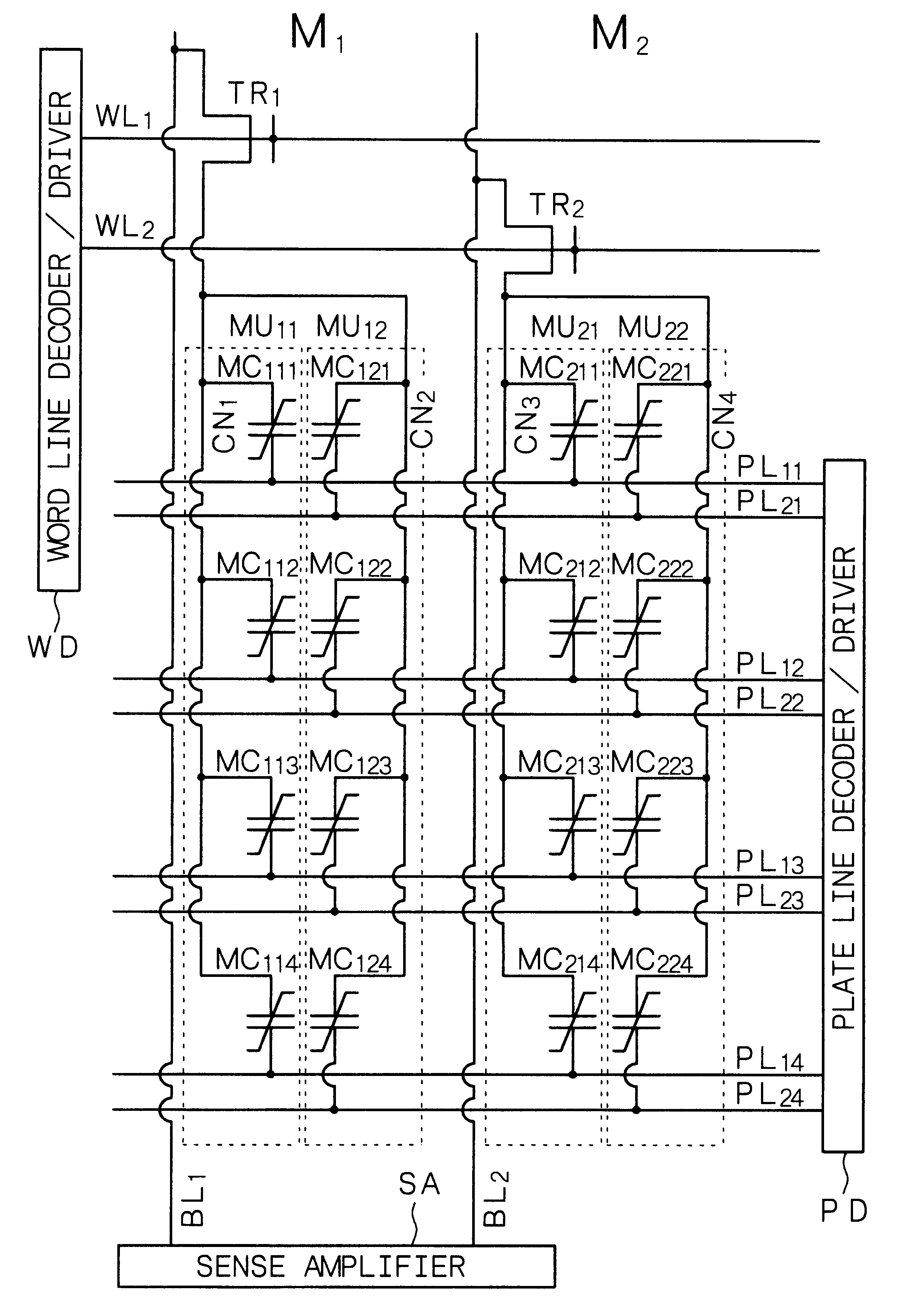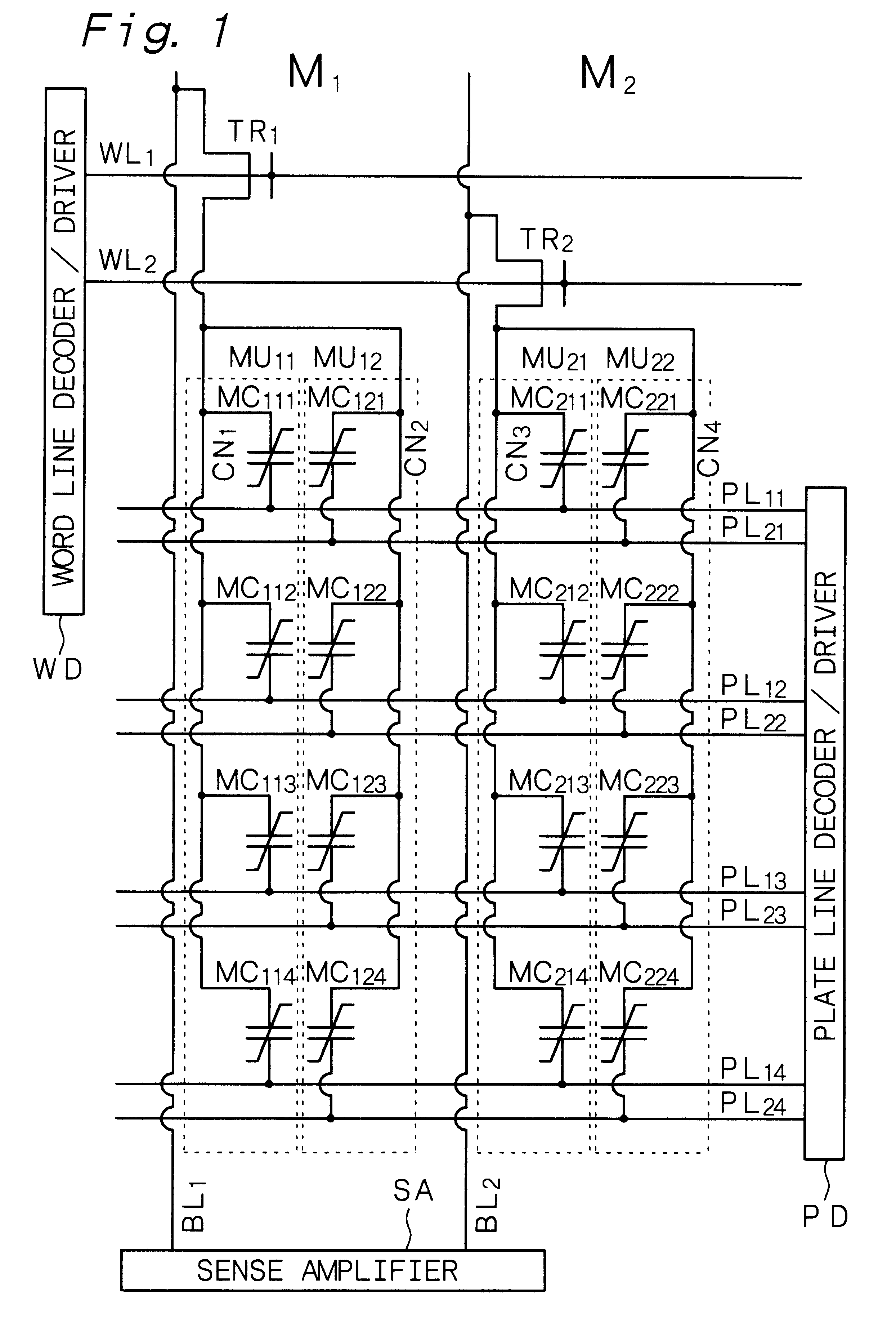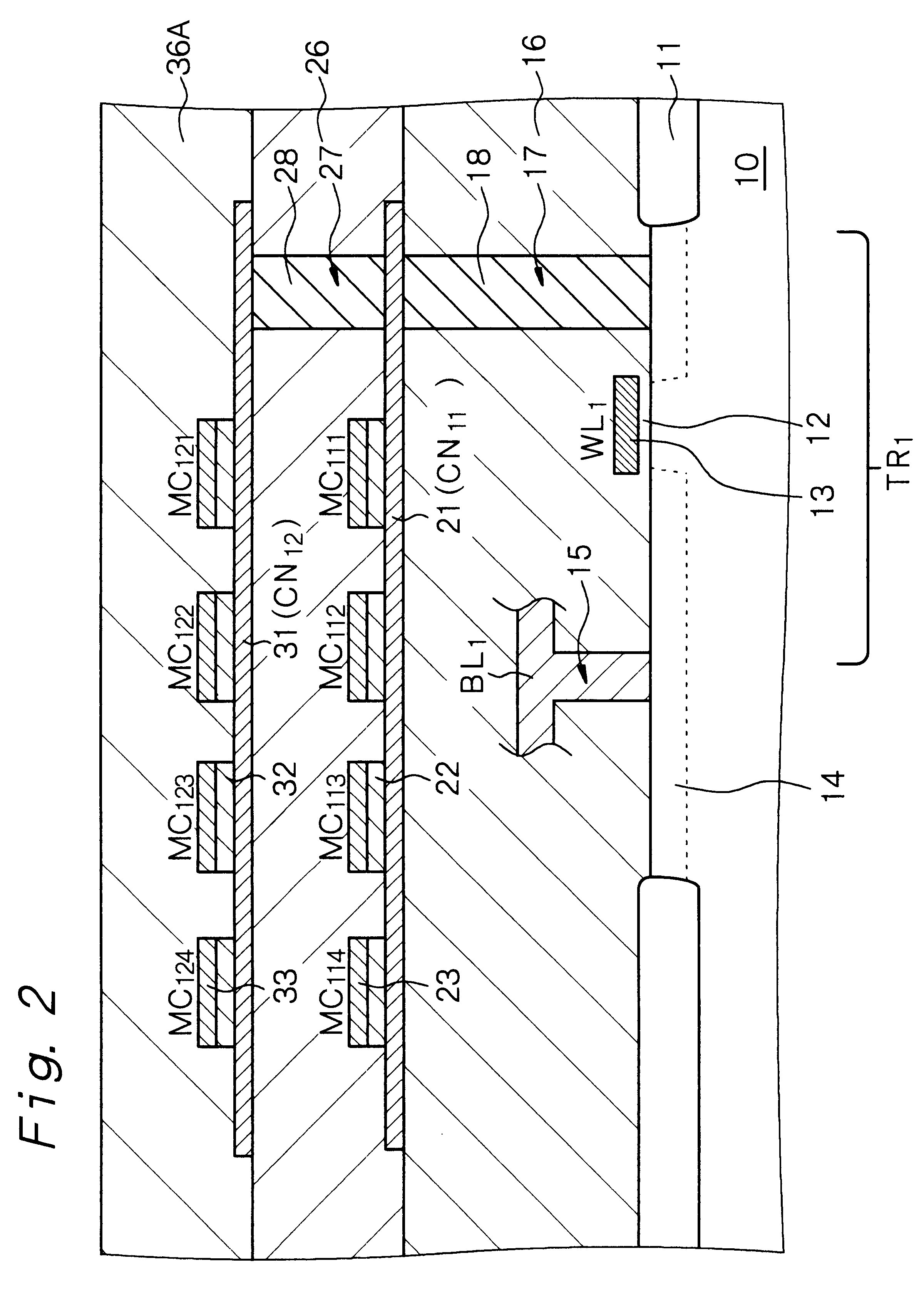Ferroelectric-type nonvolatile semiconductor memory and operation method thereof
a nonvolatile semiconductor and non-volatile technology, applied in the direction of transistors, solid-state devices, instruments, etc., can solve the problems of large area occupied by peripheral circuits, difficult layout of peripheral circuits, and difference in accumulated charge amount of capacitor members, etc., to achieve high integration and increase capacity
- Summary
- Abstract
- Description
- Claims
- Application Information
AI Technical Summary
Benefits of technology
Problems solved by technology
Method used
Image
Examples
example 1
is concerned with the ferroelectric-type nonvolatile semiconductor memory (to be referred to as "nonvolatile memory" hereinafter) according to the first and sixth aspects of the present invention. FIG. 1 shows a circuit diagram of the nonvolatile memory in Example 1, and FIG. 2 shows a schematic partial cross-sectional view thereof. While FIG. 1 shows the two nonvolatile memories M.sub.1 and M.sub.2, these nonvolatile memories have the same circuits. The following explanation will discuss the nonvolatile memory M.sub.1.
The above nonvolatile memory M.sub.1 comprises a bit line BL.sub.1, a transistor for selection TR.sub.1 made of a MOS type FET, memory units in the number of N (provided that N.gtoreq.2, and N=2 in Example 1) or memory units MU.sub.11 and MU.sub.12, and plate lines. The memory unit MU.sub.11 comprises memory cells in the number of M (provided that M.gtoreq.2, and M=4 in Example 1) or memory cells MC.sub.11m (m=1, 2, 3, 4). The memory unit MU.sub.12 also comprises memo...
example 2
Example 2 is concerned with the nonvolatile memory according to the second aspect of the present invention. FIG. 5 shows a circuit diagram of the nonvolatile memory in Example 2, and FIG. 6 shows a schematic partial cross-sectional view thereof. While FIG. 5 shows two nonvolatile memories M.sub.1 and M.sub.2, these nonvolatile memories have the same circuits. The following explanation will discuss the nonvolatile memory M.sub.1.
The nonvolatile memory M.sub.1 comprises a bit line BL.sub.1, transistors for selection TR.sub.11 and TR.sub.12 made of MOS type FETs in the number of N (provided that N.gtoreq.2, and N=2 in Example 2), memory units MU.sub.11 and MU.sub.12 in the number of N (provided that N=2 in Example 2) and plate lines. The first memory unit MU.sub.11 comprises memory cells MC.sub.11m (m=1, 2, 3, 4) in the number of M (provided that M.gtoreq.2, and M=4 in Example 2). The second memory unit MU.sub.12 also comprises memory cells MC.sub.12m (m=1, 2, 3, 4) in the number of M ...
example 3
Example 3 is directed to a variant of the nonvolatile memory in Example 2. FIG. 9 shows a circuit diagram thereof, and FIG. 10 shows a schematic partial cross-sectional view thereof. In the nonvolatile memory in Example 3, the number N of memory units is four. That is, the nonvolatile memory comprises a bit line BL.sub.1, 4 transistors for selection TR.sub.1N, 4 memory units MU.sub.1N each of which comprises 8 memory cells MC.sub.1NM and 8 plate lines PL.sub.M.
Each memory cell MC.sub.1nm comprises a first electrode 21, 31, 41 or 51, a ferroelectric layer 22, 32, 42 or 52 and a second electrode 23, 33, 43 or 53. In each memory unit MU.sub.1n, the first electrodes of the memory cells MC.sub.1nm is in common. That is, they constitute a common node CN.sub.1n.
The common first electrode (common node CN.sub.1n) in the memory unit MU.sub.1n is connected to the bit line BL.sub.1 through the transistor for selection TR.sub.1n. In the memory unit MU.sub.1n, further, the second electrode of the...
PUM
 Login to View More
Login to View More Abstract
Description
Claims
Application Information
 Login to View More
Login to View More - R&D
- Intellectual Property
- Life Sciences
- Materials
- Tech Scout
- Unparalleled Data Quality
- Higher Quality Content
- 60% Fewer Hallucinations
Browse by: Latest US Patents, China's latest patents, Technical Efficacy Thesaurus, Application Domain, Technology Topic, Popular Technical Reports.
© 2025 PatSnap. All rights reserved.Legal|Privacy policy|Modern Slavery Act Transparency Statement|Sitemap|About US| Contact US: help@patsnap.com



